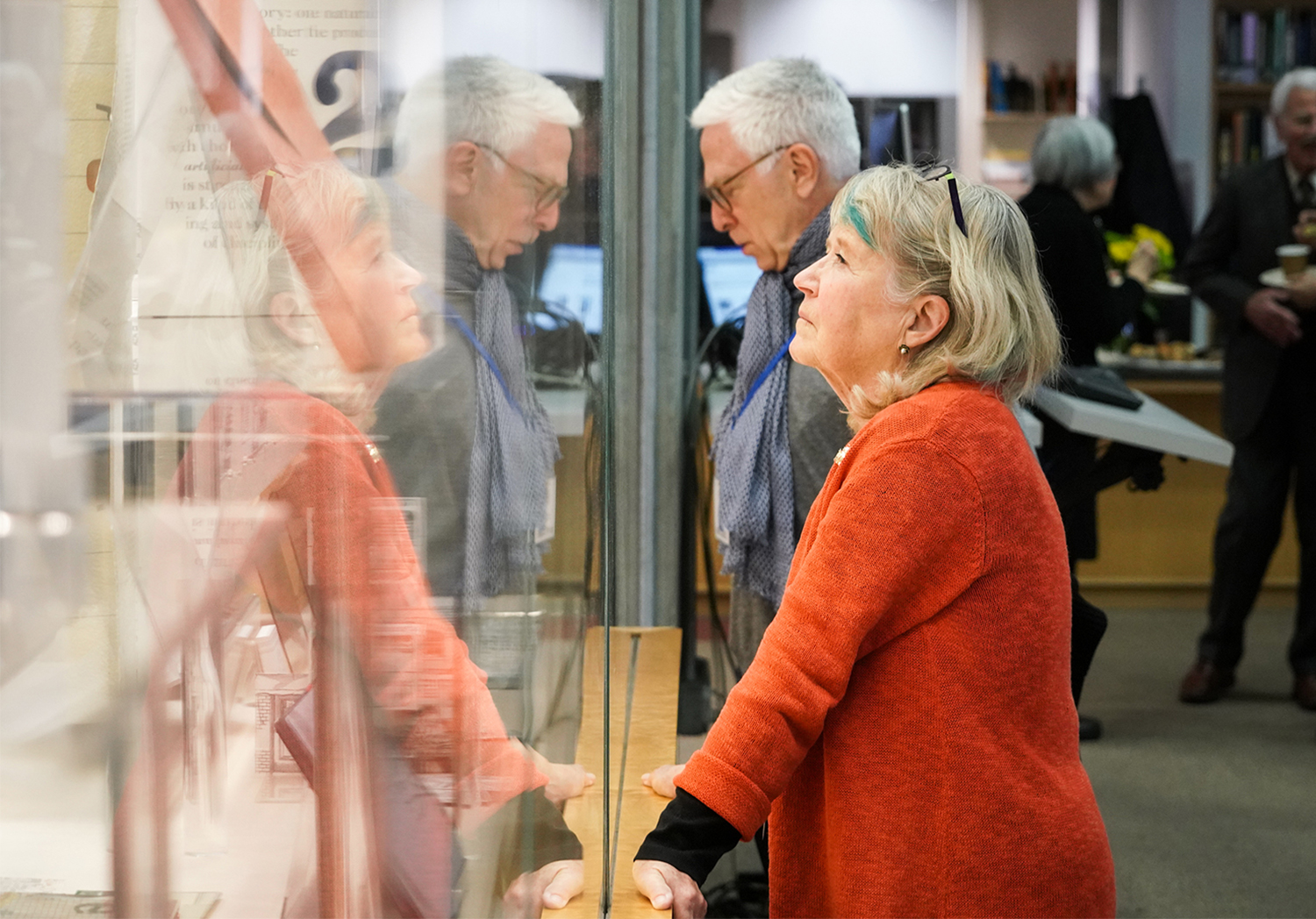
“Art is always contentious,” said David Eifler, environmental design librarian.
In the cash-strapped landscape of public higher education, one question concerning librarians and educators alike is: Who decides what counts as art — and what, of that, is valuable?
“The state is good about providing funding for traditional academic material,” Eifler said. “But this,” he said, motioning toward the artwork filling his library’s halls, “transcends the bounds of that.”
The Environmental Design Library is currently hosting the exhibit The Book as Place: Visions of the Built Environment, a collection of works crafted by artists using all manner of materials and shapes.
The library has about 350 such works, called artists’ books, in its collection. On Saturday, a dozen of its most notable were on display during a special event for the Library Legacy Circle of The Benjamin Ide Wheeler Society, a group of donors who have remembered the UC Berkeley Library in their bequest plans.
For the Library, the event was a way to say thank you to supporters who make its rich collections and services possible. This was the second event for the Legacy Circle, and the Library plans to continue the tradition annually by unearthing gems from each of the campus’s 25 libraries.
“It’s through the generous bequests of people like (Legacy Circle members) that these types of materials are available,” Eifler said.
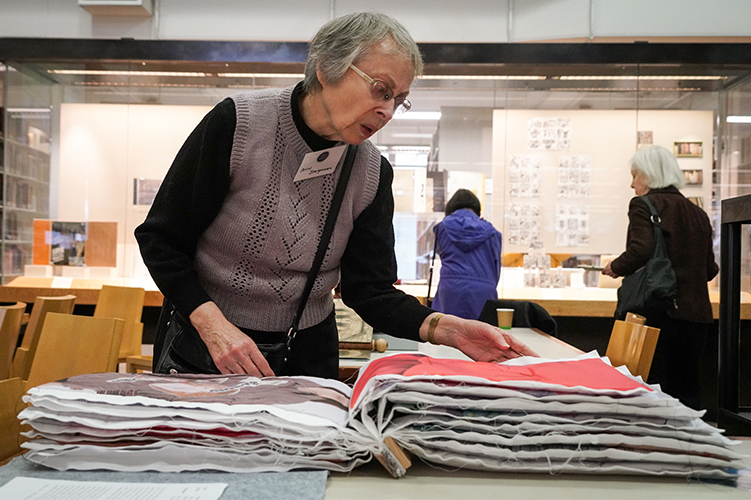
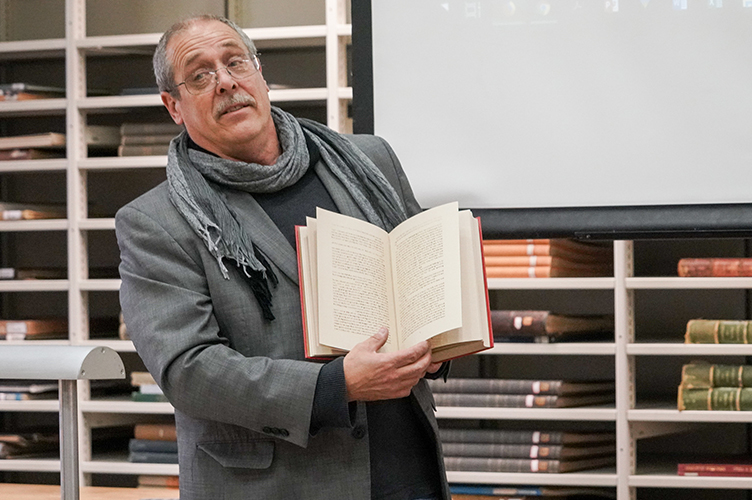
In fact, the Environmental Design Library's collection of artists’ books — one of the most widely used in the country — is funded entirely by donations. Raymond Lifchez, a professor emeritus of architecture and city and regional planning, inaugurated the collection with an endowment about 15 years ago, and several others have helped it expand from there.
“Some may look askance and say, ‘What intellectual content does this art actually have? How does this support the mission of the university?’” Eifler said. “But we bring them in the classroom, students model them, and they have extensive discourse about what these books are and what they do.
“Rather than trying to explain all that, individual donors have said, ‘This is important material to be collecting.’”
For Eifler, artists’ books exemplify the principles of environmental design by exploring how to use a space — in this case, the structure of a book — to build an experience, and convey a message.
At the event, supporters wove through the library’s atrium, taking in the works. Some books were behind display cases — as part of the Book as Place exhibit, up through May 17 — while others were laid out on tables, inviting guests to freely flip through and experience them.
Among the artists’ books available to touch were a copy of H.G. Wells’ The Invisible Man, in which every letter has been laser-cut except for the ending (when the invisible man reappears); a rendering of Italo Calvino’s city of Baucis, carved into an atlas book; and a leather-bound volume framed by two redwood blocks holding a split rock.
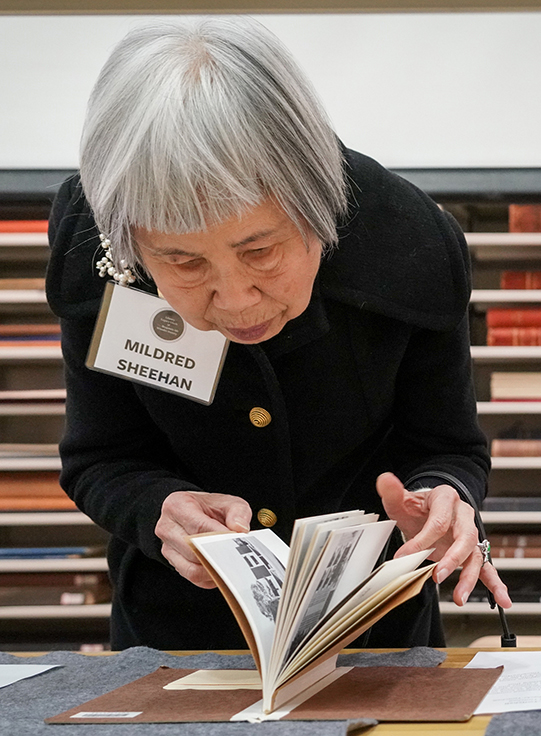
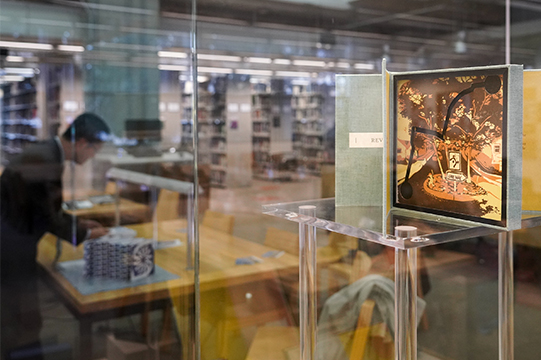
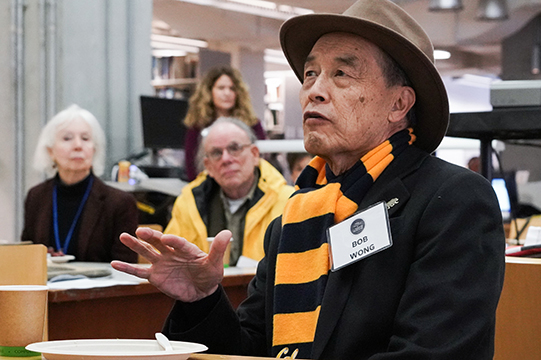
Richard Sun M.P.H ’86, a Sacramento-based doctor who studies photography, appreciated the book with the rock, saying it “pushes the boundaries of what a book is.”
Sun, who researches and donates photography books for the Art History/Classics Library, also pointed to the book of loose-leaf pages made from wild grasses, featuring barely visible watermarks of animals that are now extinct.
“It’s a wonderful concept,” Sun said, drawing a link between artists’ books and photography. “To me, the concept is what’s important in photography. Anybody can take a beautiful picture of Yellowstone, but it’s the concept, the emotion, and thought that photography engenders that I’m interested in.”
Maryly Snow ’66, a Library supporter and a former UC Berkeley architecture and visual resources librarian, enjoyed the book Project Bi Nary, composed of many t-shirts sewn together. Each “page” explores a binary of some sort — republican and democrat, native and immigrant, rich and poor, for example — by showing iconic imagery alongside two faces, with no indication of who matches which title.
“I like the way the artist split this — is he the genius? Or the mentally ill?” Snow mused about one of the pairings.
For Snow, her support for the Library is inspired by more than 30 years working with its collections and the campus community.
“I’m a librarian, and I spent years on the Berkeley campus,” she said. “My whole adult life has been connected to the UC, and I know how much they could do with more resources.”
To learn more about the Library Legacy Circle, contact the Library Development Office at 510-642-9377 or give-library@berkeley.edu.
On March 1 from 4-6 p.m., the Environmental Design Library will host another artists’ book event, open to the public: Women and Artists’ Books